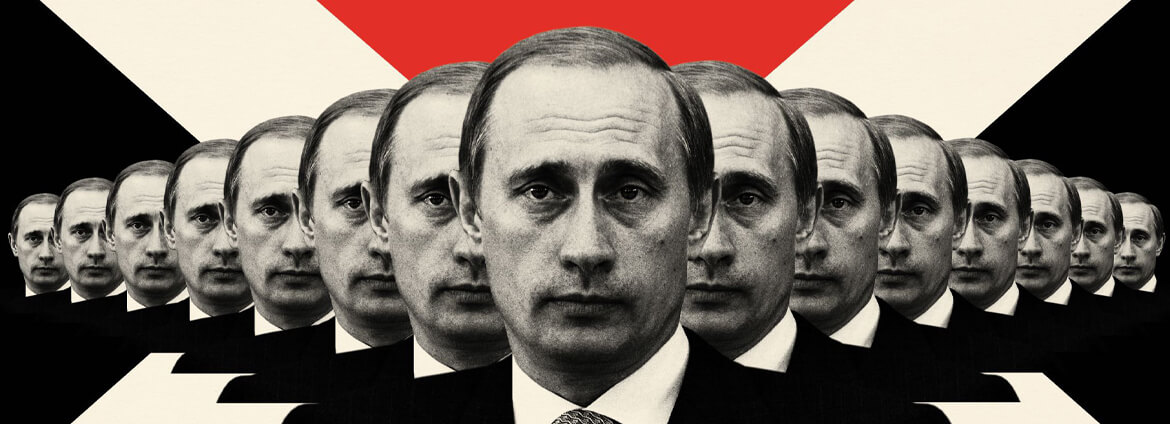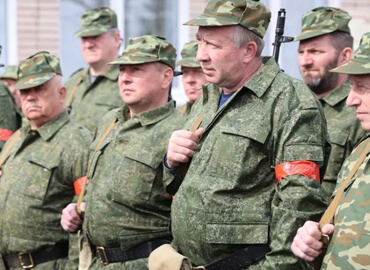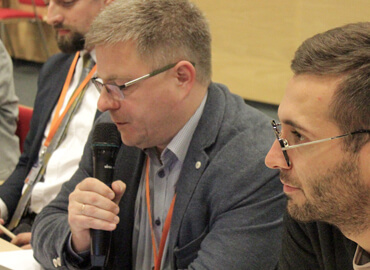The Kremlin narrative about Belarus in 2020, as any reader can see, has been set. There are two lines on the «counter-movement». One is the old Kremlin’s discontent with Lukashenko’s double-dealing policy and the idea that it would be good to replace him. The second line is a daily stream of monotonous publications directed against Svetlana Tikhanovskaya and the Coordination Council, with every piece framing the organizational structures of the protest as an all-encompassing battle of the Kremlin with the West. For the Kremlin media, Svetlana Tikhanovskaya, her activities, and the work of Belarusian centers of solidarity are just an example of the actions of Western «puppeteers».
Belarusian analyst Andrei Yeliseyeu (from the iSANS expert group) completed in 2020 significant work that described in a series of reports the «Kremlin narrative» on the political crisis in Belarus. He showed that there is an active group of Russian media resources which consistently constructs a negative image of Belarusian protests, linking them in content with Ukraine, the Baltic countries, Poland, while at the same time addressing audiences in these countries. The harshest fakes are published on sites that use the signifying term «Belomaidan» regarding the Belarusian protests. They come from three groups of resource groups, for example Regnum, Baltnews, and Ukraina.ru in Russia; Strana.ua in Ukraine; and the so-called «Novorossiysk» resources, which are localized in several countries.
Here is a headline on the Strana.ua website: «The dominance of the Russian language and the sale of factories is its own tomos. What Lukashenko’s opponents are preparing for Belarus». You cannot even call it a «fake», since the authors of the text do not provide any evidence or argumentation. They simply make a journalistic «projection»; that is, «speculating» on the imaginary intentions of the Belarusian opposition.
Offensive epithets addressed to Tikhanovskaya are circulated (Zhirinovsky on Tikhanovskaya: «Look at that vile face! It’s a witch!»; Lukashenko: «Guaidikha» [from the surname for Venezuela’s Juan Guaidó]; Mardan-Kashin’s program on «Komsomolskaya Pravda» radio: «Listen, as far as Tikhanovskaya is concerned she is, of course, a kind of classic murzilka. It seems to me that it is completely pointless to talk about her…»)
At the same time, they use the markers of threats and fears that are already well established in the post-Soviet space. The opposition «will ban the Russian language», the opposition will bring «Soros» and predatory privatization will begin, the opposition wants to split the Church, etc.
Andrei Yeliseyeu analyzed a number of Vkontakte pages and showed that 25 such «narrative matrices» can be distinguished through which material from the current information agenda is tweaked. He created a monitoring group and public platform at fakeby.org, which breaks down incoming messages into these 25 cells to show how these narrative matrices are constantly being reproduced.
The crisis in Belarus makes it possible to clearly reveal the entire «ecosystem», as media groups that work like a neural network within the framework of one ideological narrative are now customarily referred to.
By no means do all Russian media produce a stream of insults against Belarusian frontline protestors and are not waging a war with the West on the «Belarusian front». For example, the TASS and Interfax agencies report on the protests and on Lukashenko’s statements, but they do so without a specific propaganda weight. The Independent Newspaper (Nezavisimaya gazeta) regularly publishes reports by its Minsk correspondent Anton Khodasevich, which reflect the protest events in a balanced way, and the newspaper Kommersant provides news from Belarus while observing editorial norms of quality journalism.
Against this background, the propaganda «ecosystem» is clearly visible. It purposefully and in a coordinated way creates a distorted picture of the Belarusian political crisis.
How the «ecosystem» works can be most clearly seen through the example of any specific «news» that is ignored by quality media as insignificant or fake, but since it is embedded in the basic propaganda narrative it rapidly advances through the group of Kremlin resources.
For example, in one of his speeches, Lukashenko refers to Tikhanovskaya’s statement made at an allegedly «closed press conference in Kyiv» that she «does not decide anything». This statement by Lukashenko was aimed at emphasizing that «Tikhanovskaya is a puppet».
On the evening of November 27, RIA Novosti, referring to the Telegram channel of Lukashenko’s press service First Pool (Pool pervogo) offers this headline: «Lukashenko talks about an intercepted opposition conference».
This headline is then picked up practically unaltered by Vesti.ru, National News Service (NNS), the Federal News Agency (RIA FAN), Lenta.ru, Gazeta.ru, Life.ru, Izvestia, Profile, Discussions of the Week (Argumenty nedeli), KP-Belarus, and then news.rambler.
Then comes a second thread through small little-known resources (around 40) that pick up this headline before it gets put into the so-called «news aggregators» – SMI2, Lentainfom, etc. – whose announcements in the «Partners’ News» section appear on numerous resources, including those in high-quality media outlets.
Or a similar example. Senator Pushkov in his own Twitter account reacts to the fact that Lithuania recognized Svetlana Tikhanovskaya as president (September 10). It is clear that most media sources ignore Pushkov’s tweet as insignificant news.
However, RIA Novosti launchds a new topic: «Pushkov calls Lithuania’s statement about Tikhanovskaya a double standard». And it is picked up by RIA FAN, Regnum, Izvestia, Gazeta.ru, Lenta.ru and then the news gets onto news.rambler and yandex.news, the news aggregator smi2.ru, and then it is rolled through the group of small resources, including sovetov.su, dni24.com , politobzor.net, politros.com, vsesmi.ru imag.one, etc.
In the shortest version, this line is clearly visible on RIA Novosti’s starting message «Skabeeva «caught» Tikhanovskaya in a lie about cutlets». It is obvious that the repeating of this kind of news is anecdotal even for low-quality media.
Tikhanovskaya said in passing in one of her speeches that she did not know a recipe for cutlets and Skabeeva scoffed at this on air on his program. An inquiry shows that RIA Novosti’s start message was used only by Life.ru and a group of small resources, while news.rambler and Yandex-news were pumping up this message.
Any such inquiries lead us to the fact that we see a line of resources that in all cases directly replicate RIA Novosti’s headlines. These are Vesti.ru, Lenta.ru, Gazeta.ru, Life.ru, Izvestia, NSN, FAN, news.rambler, and two or three news aggregators.
At the core of this ecosystem are content groups led by political editors:
1) state media: RIA Novosti, RT (plus Sputnik, Baltnews, and Ukraina.ru, which are part of the Russia Today holding), as well as Vesti.ru (VGTRK)
2) the content group of Rambler holding (Lenta.ru, Gazeta.ru, and Rambler.new with an active mailing list of news)
3) the content newsroom of the Kovalchuk holding, which now unites Izvestia, Life.ru, and REN-TV
4) FAN and a group of small resources (Prigozhin’s “Patriot” holding)
5) news aggregators (Sorkin’s holding)
Of course, the ecosystem space is not limited to this core of resources. But this core was formed quite a while ago.
Its political patrons include A. Gromov, S. Kiriyenko, and Dmitry Peskov, who are generally responsible within the Kremlin system for information flows and propaganda.
Leaders of content groups in media holdings constantly interact with a group subordinate to the deputy head of the Presidential Administration (over the years these have been V. Surkov, V. Volodin, and S. Kirienko), which develops operational recommendations.
However, today these recommendations as «themes» or «manuals» already play a lesser role than in the «aughts», since the entire propaganda machine is guided by the leading topics on RIA Novosti.
Around the core of the ecosystem is a large group of media resources that exist outside of large holdings. Sometimes these are ideological left-wing resources, or ideological right ones, which, for their own ideological reasons, participate in pumping up an anti-Western, anti-liberal narrative, including themes on Belarus.
The most popular of these are Regnum, Tsargrad, EurasiaDaily, Ukraina.ru, Strategic Culture Foundation, Eye of the Planet (Oko planet), Military Review (Voennoye obozreniye), News-Front.info, antimaidan.info, Political Navigator, politkus.ru, RusPravda.Info, and the Red Spring (Krasnaya vesna) agency.
It should be noted that columnists from «certified» Kremlin resources do not, as a rule, pick up the most detestable statements made by Lukashenko.
Are there many authors and publications in Russia that are ready to further substantiate Lukashenko’s statement that Poland is going to annex the Grodno and Brest regions? Is it simply a matter of citing Lukashenko’s statement as an official statement of the head of state, or is it in precisely developing this topic in detail as propaganda? There are not that many kinds of platforms or experts.
Most pro-Kremlin experts will not justify Lukashenko’s statement, since an attack by Poland on Belarus is patently absurd.
But we see materials that «prove» Poland’s aggressive intentions only on Tsargrad («Poland dreams of seizing western Belarus…»), Sputnik.by (Gasparyan: The Polish dream of annexing Belarusian lands is by no means a secret), EurasiaDaily («Is the Brest and Grodno Voivodeship of Poland already coming tomorrow?»).
It should be noted that Lukashenko ingeniously picks up images from the Kremlin propaganda and uses them in an exaggerated way. There is a mutual overflow of images from the Kremlin and Lukashenko’s propaganda. Naryshkin calls Navalny «a sacred sacrifice» and Lukashenko repeats this in referring to Roman Bondarenko. Moscow creates a conflict narrative about Poland and Lukashenko says that he saved the Grodno region from joining Poland. In anti-liberal Russian networks, an ironic word for «fighters» (bortsuny) is used and Lukashenko takes up something similar for «protestors» (protestuny).
Andrei Yeliseyeu convincingly shows in his report on 25 Kremlin propaganda narratives that these are matrices built on parallels that span the whole of Eastern and Central Europe.
The Belarusian white-red-white flag, the song «A Mighty God», the Belarusian Autocephalous Church, etc. – these are all tied to the marker of «fascism», just as it is done for Ukraine, Latvia, and Lithuania.
«Zmagars» – a marker of mockery of protesters – is an analogue of «maydanuts» [trans. note – a portmanteau of «Maidan» and a person with Down Syndrome]. «Puppets», «puppeteers» – referring to Svetlana Tikhanovskaya and all the frontline protestors – is the same marker that is used for all pro-European politicians and public figures in Central and Eastern Europe. (Pavel Smolyak, in the Opinions section on RT, writes this about the march in Minsk after the death of Roman Bondarenko: «…the death of Bondarenko came in very handy for Tikhanovskaya, as the tragedy served as a vivid background for the presentation of the ‘people’s tribunal,’ which had been ripening in the depths of the Polish special services all autumn».)
«You will clean floors in Poland!» This is a well-known marker for labor migration used to emphasize that if Belarusians get out of Moscow’s control, their fate is to work in low-skilled jobs in Europe. The same rhetoric is used in anti-Western propaganda texts about Lithuania, Latvia, and Moldova, and was used against Ukraine during the «revolution of dignity».
The Belarusian political crisis makes it possible to clearly identify the entire contour of the Kremlin propaganda ecosystem and show the entire repertoire of narratives that are aimed at escalating the conflict with the West, with individual European countries, and with the European Union as a whole.
Материал доступен на русском языке: Беларусь как полигон кремлевской антизападной пропаганды










